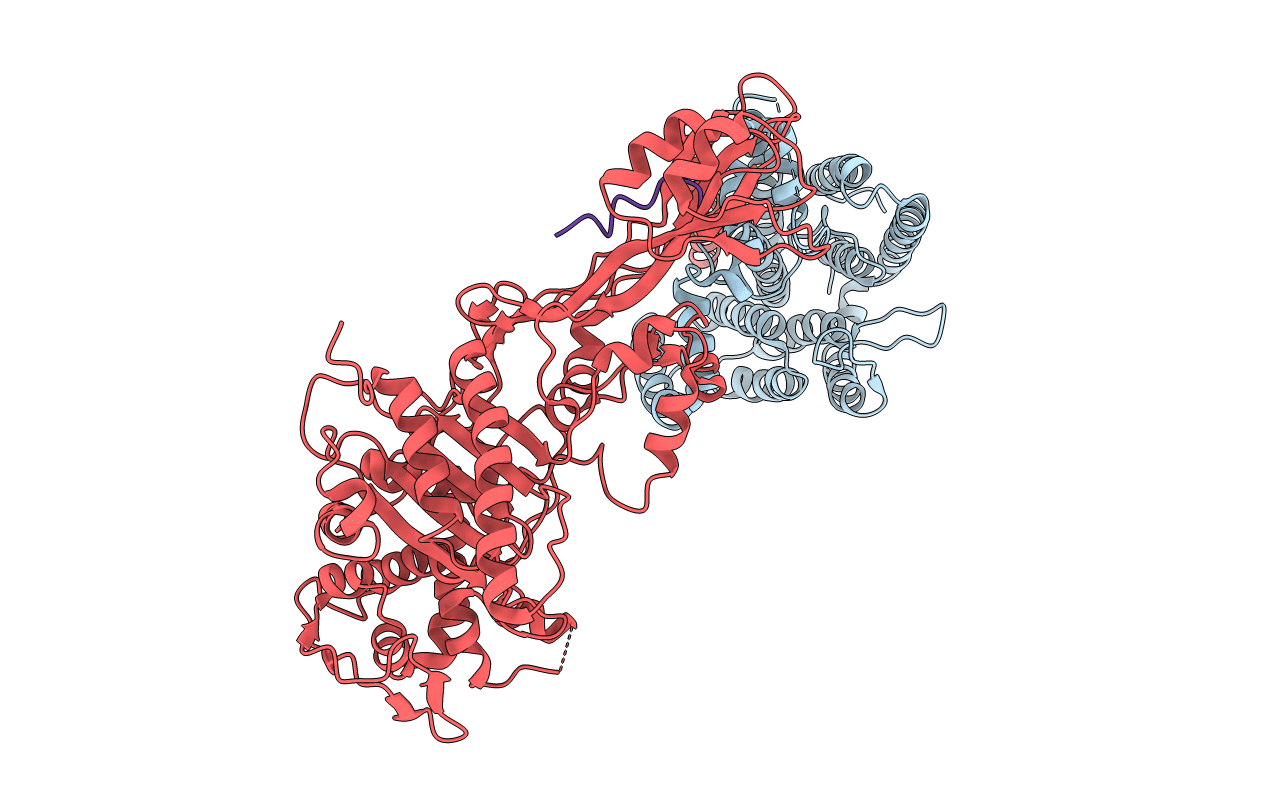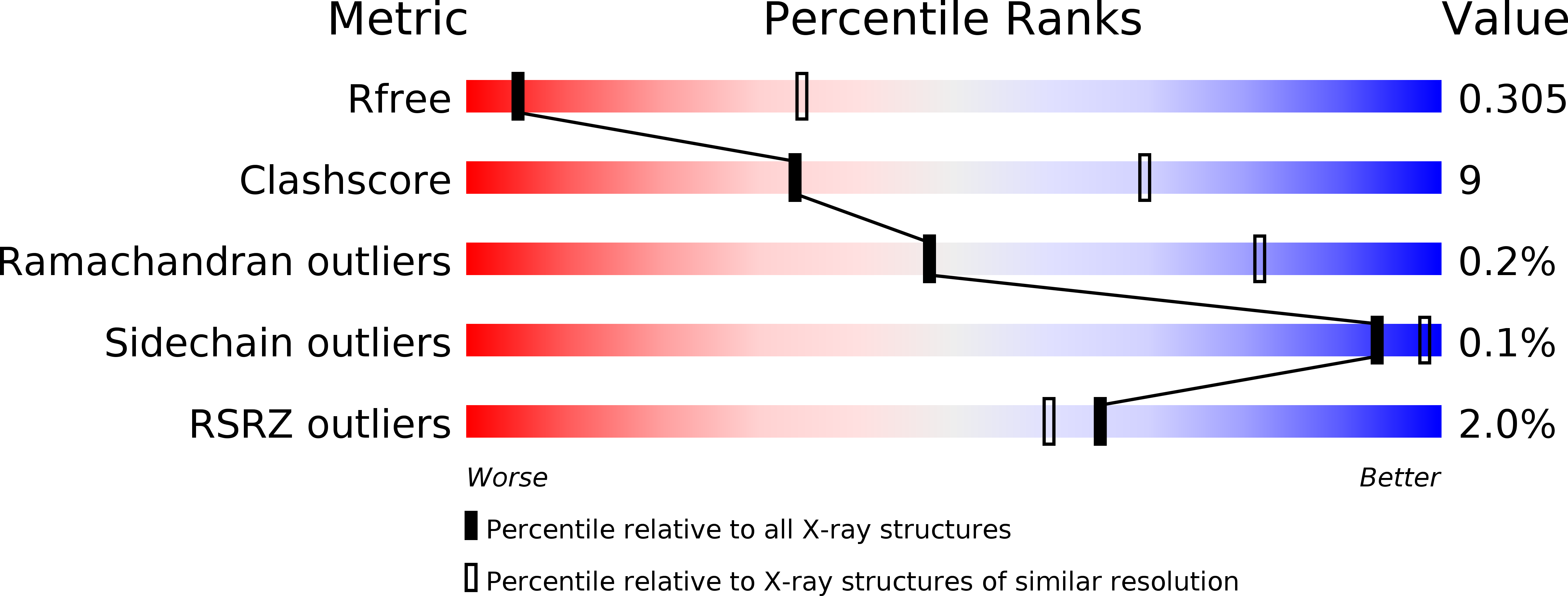
Deposition Date
2019-06-30
Release Date
2020-03-18
Last Version Date
2024-11-20
Entry Detail
PDB ID:
6PL5
Keywords:
Title:
Structural coordination of polymerization and crosslinking by a peptidoglycan synthase complex
Biological Source:
Source Organism:
Thermus thermophilus HB8 (Taxon ID: 300852)
Host Organism:
Method Details:
Experimental Method:
Resolution:
3.50 Å
R-Value Free:
0.30
R-Value Work:
0.28
R-Value Observed:
0.28
Space Group:
P 32 2 1


